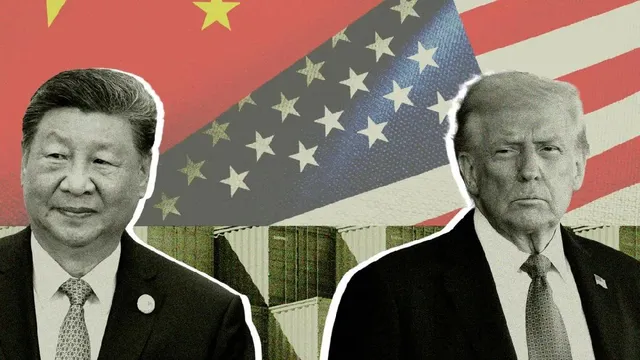- By Aditya Sinha
- Thu, 30 Oct 2025 04:39 PM (IST)
- Source:JNM
In early October 2025, China’s Ministry of Commerce quietly issued Announcement No. 61 — a new regulation that could change the way the world trades and manufactures. It imposes sweeping export controls on rare-earth elements, permanent magnets, and related technologies. Any company whose product contains even 0.1 percent of Chinese-processed rare earths must now obtain Beijing’s approval before export. Exports for military use are banned in principle, while applications related to semiconductors and artificial intelligence will face tight scrutiny.
At first glance, this may seem like a narrow trade rule. But in reality, it represents a turning point in the global balance of economic power. Rare earths, a group of 17 metals, are essential for almost everything modern: fighter jets, wind turbines, electric vehicles, smartphones, and medical scanners. They are not rare in the ground, but refining them is costly, complex, and environmentally damaging. Over three decades, China built the world’s most complete ecosystem for mining, separating, and processing these materials. Today, it controls around 70 percent of global mining and over 90 percent of refining.
With this new regulation, China has converted its industrial dominance into a legal instrument of strategic control. For the first time, it is applying a framework similar to the US Foreign Direct Product Rule, a rule that lets Washington regulate exports of foreign goods made using American technology. Beijing has simply reversed the logic. Now any product that includes even a trace of Chinese-origin rare earths or uses Chinese refining technology falls under its jurisdiction.
This step is about redefining how nations exercise economic sovereignty. China’s move is part of a larger strategy that uses law, regulation, and licensing as tools of geopolitical power, sometimes called lawfare.
Companies must now navigate complex paperwork, local intermediaries, and approval chains that can take months. Licenses can be withheld or delayed without formal denial. Bureaucracy itself becomes a form of leverage. Alongside this, China has restricted its own professionals from participating in foreign rare-earth projects, limiting the transfer of technical know-how. It has also expanded oversight over data, batteries, and industrial standards. Together, these measures show a shift from controlling goods to controlling the rules that govern goods.
In Washington, the reaction was immediate. Treasury Secretary Scott Bessent called the move “China versus the world” and urged democratic allies (Japan, India, Australia, and Europe) to form a coordinated response. But his message has been undercut by President Donald Trump’s own policies. At the very moment when America needs partners, Trump has raised tariffs on steel, automobiles, and manufactured goods, not just against China, but also against its allies.
This contradiction has weakened America’s credibility. The United States cannot ask others to reduce their reliance on China while simultaneously penalising their exports. Even within the G7, attempts to issue a joint statement against China’s rare-earth curbs collapsed, reflecting how Washington’s unpredictability has eroded trust.
Ironically, it was the United States that first used extraterritorial trade controls against China’s semiconductor industry. Beijing is now mirroring those methods. Each side justifies its actions as “defensive,” but both are engaged in a cycle of economic retaliation. The outcome is not decoupling, but duplication: two competing systems trying to out-regulate one another.
For global markets, the cost is already visible. Prices of neodymium and dysprosium, key rare-earth elements used in electric motors, have surged. Manufacturers are scrambling to secure non-Chinese supplies, but alternatives in the United States and Australia will take years to reach full production. Clean energy projects and electric vehicle manufacturing could slow down, not because of lack of demand, but because of bottlenecks in raw materials.
Meanwhile, America’s own tariffs are hurting its economy. Farmers who lost access to Chinese buyers for soybeans and grains have not found replacement markets. Retailers warn that toys, electronics, and holiday goods, 90 percent of which come from China, will become more expensive. Tariffs designed to punish Beijing end up punishing American consumers.
For its part, China faces hidden costs too. By tightening control, it risks pushing foreign investors to seek alternatives in Africa, Latin America, and India. Strict licensing may discourage innovation within its own industry. What Beijing gains in leverage, it may lose in trust.
The larger story is one of fragmentation. The world is slowly dividing into two overlapping but insulated systems. One, centred on China, integrates mining, refining, and manufacturing within a single state-controlled framework. The other, led by the United States, is attempting to rebuild capacity through subsidies and industrial policy.
This duplication may create resilience, but it also raises costs and slows progress on clean energy, technology, and supply-chain diversification. For other countries, this moment offers both opportunity and risk. These countries can attract new investment as alternative suppliers, but they must navigate competing legal systems and political pressures. In a world where every magnet or chip carries geopolitical weight, neutrality becomes a complex choice.
China’s approach appears calculated but opaque. America’s actions are transparent but erratic. Both are using economic tools for political ends, yet neither seems fully prepared for the long-term consequences.
The magnet, that small, powerful component inside every motor and missile, has become a symbol of our times. It draws the world together even as it pushes it apart. Power today lies not just in resources, but in the ability to govern them wisely.
Both Beijing and Washington must realise that dominance without restraint is fragile. Economic power that alienates partners eventually weakens itself. In this new age of law and leverage, the nations that practice restraint, transparency, and cooperation will define the material foundations of the century.
(The author is a public policy analyst. The views expressed in this article are his own.)

